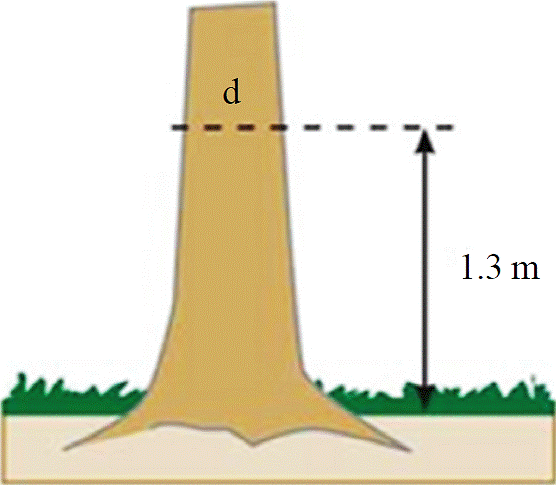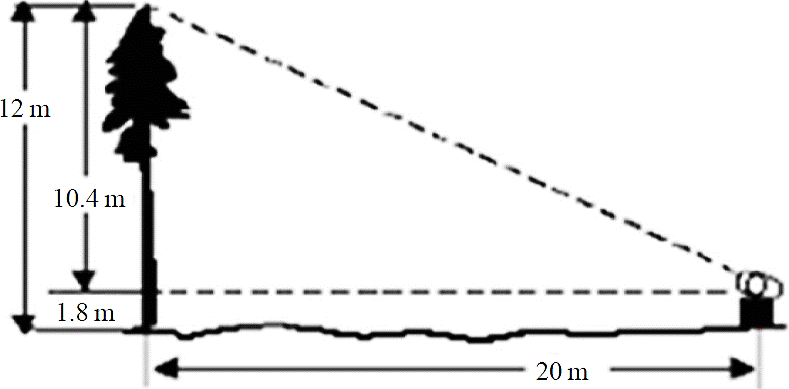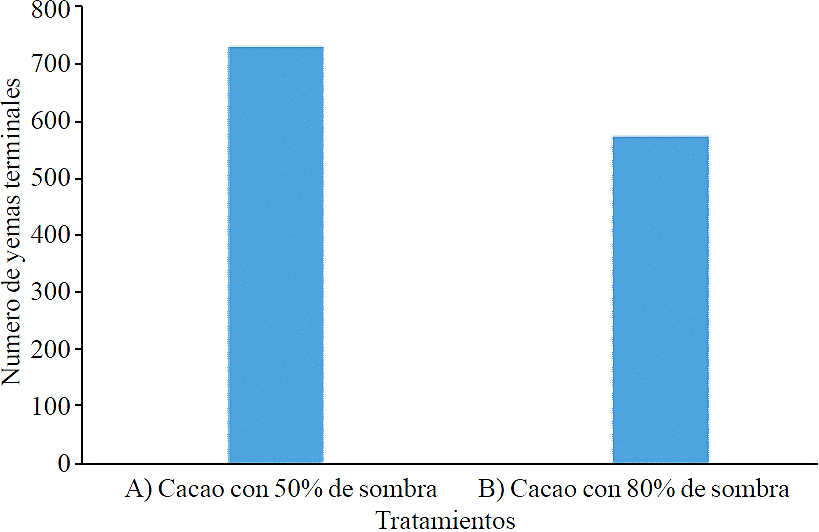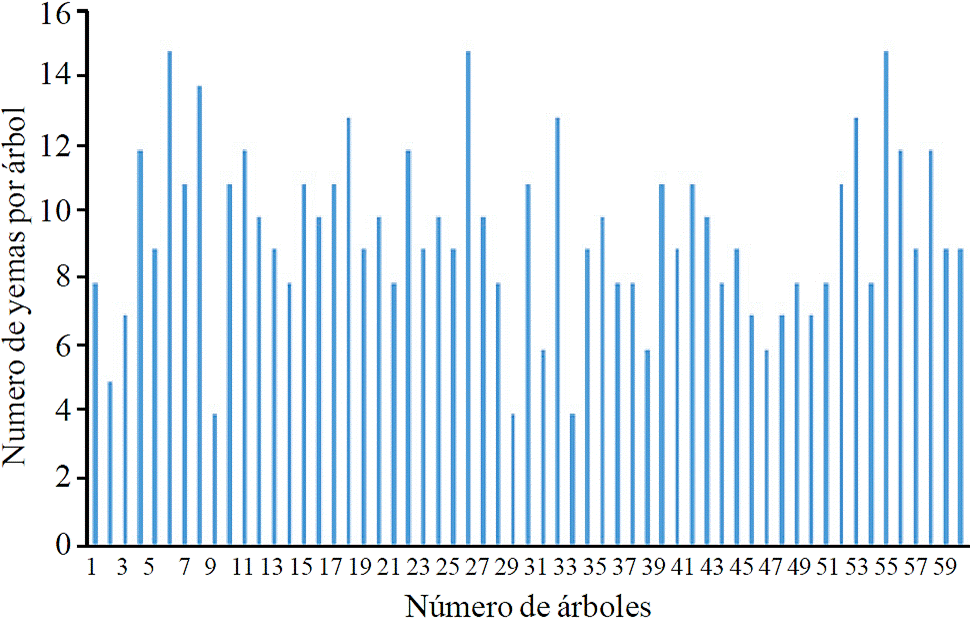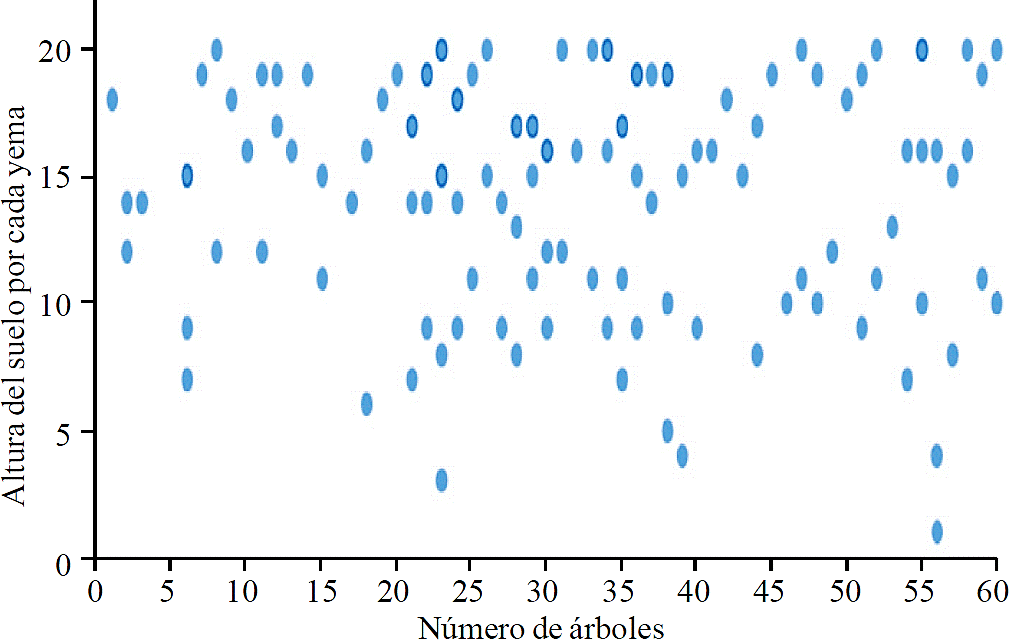Serviços Personalizados
Journal
Artigo
Indicadores
-
 Citado por SciELO
Citado por SciELO -
 Acessos
Acessos
Links relacionados
-
 Similares em
SciELO
Similares em
SciELO
Compartilhar
Revista mexicana de ciencias agrícolas
versão impressa ISSN 2007-0934
Rev. Mex. Cienc. Agríc vol.7 spe 14 Texcoco Fev./Mar. 2016
Articles
Effect of pruning on cocoa plantations in the state of Tabasco, Mexico
1Colegio de Postgraduados-Campus-Tabasco. Periférico Carlos A. Molina, carretera Cárdenas Huimanguillo, km 3.5. H. Cárdenas Tabasco. C. P. 86500. (sergio.lopez@colpos.mx; vcordova@colpos.mx; felipegl@colpos.mx).
2Colegio de Postgraduados-Campus Veracruz. Carr. Veracruz- Xalapa km 26.5, Rancho Tepetates C. P. 91690, Municipio de Manlio Fabio Altamirano, Veracruz, Veracruz.
The objective of this research was to evaluate the productivity of cacao agroecosystem in response to crown pruning in the field San Francisco located in the municipality of Cardenas, Tabasco. In the study site counted total cocoa trees: recording 125 individuals; where 65 trees belonged to treatment 1: cocoa with 50% shade and 60 individuals to treatment 2: cocoa with 80% shade. The variables measured were diameter at breast height (DAP1.3), total height and counted each terminal bud of cacao tree and recorded the amount of fruits per treatment. The amount of terminal buds was higher for treatment 1 with 731 buds while in treatment 2 were 574. Terminal buds were closer to the ground in treatment A than in the treatment B, coupled to this, the number of fruits per tree was higher for treatment A. Performing the statistical analysis resulted that treatment A is better to increase production. It was concluded that crown pruning is an alternative to increase cocoa productivity; it only requires a few expenses and good assessment to perform this technique.
Keywords: buds; cacao plantation; diameter; productivity
El objetivo de esta investigación fue evaluar la productividad del agroecosistema cacaotal como respuesta a la poda de copa en el predio San Francisco ubicado en el municipio de Cárdenas, Tabasco. En el sitio de estudio se contabilizó el total de árboles de cacao: se registraron 125 individuos; los cuales 65 árboles pertenecieron al tratamiento 1: cacao con 50% de sombra y 60 individuos al tratamiento 2: cacao con 80% de sombra. Las variables que se midieron fueron el diámetro a la altura del pecho (DAP1.3), altura total y se hizo el conteo de las yemas terminales a cada árbol de cacao y se registró la cantidad de frutos por tratamiento. La cantidad de yemas terminales fue mayor para el tratamiento 1 con 731 yemas, mientras que en el tratamiento 2 fue de 574. Las yemas terminales se encontraron más cerca del suelo en el tratamiento A que en el tratamiento B, aunado a esto, el conteo de frutos por árbol fue mayor para el tratamiento A. Haciendo el análisis estadístico resulto que el tratamiento A es mejor para aumentar la producción. Se concluye que la poda de copa es una alternativa para aumentar la productividad del cacao, se requiere pocos gastos y buena asesoría para llevar a cabo esta técnica.
Palabras claves: cacaotal; diámetro; productividad; yemas
Introduction
Pruning in cocoa, consist on removing buds, unproductive branches and dry parts of the plant to facilitate the development of new buds, allowing the entry of light in cacao and eliminate the presence of pests and diseases. Pruning prolongs the life of the tree and increases yield. Pruning should be light, seeking an appropriate structure for the tree, improve aeration and facilitate the light penetration (Enríquez, 2004; Sánchez et al., 2007).
The main objective of pruning is to generate new terminal buds and increase flowering and fruit harvest (Bedker et al., 2004). Pastorelly et al. (2006) mentions that besides the aforementioned factors, also influences shadow regulation.
Pruning is made according to age and plant condition. There are three types of pruning: shape, maintenance and rejuvenation. The first is to obtain three or four primary branches during the first two years, so the plant adopts a best shape (Enríquez, 2004). Maintenance pruning refers to removal of infected fruit and plant parts by pests and diseases. Finally, rehab pruning (rejuvenation) aims to generate new trees through obtaining new terminal buds. Despite the interest of rehabilitating unproductive cacao plantations, few programs promote assessment to reactivate plantations, coupled with that, the frosty pod rod disease has brought great shortage of cocoa fruits and producers have abandoned the crop (Córdova, 2013).
Most cocoa plantations are old and to not take down, rehabilitation is set to increase productivity. This method is carried out with the necessary tools (basic tools for pruning). After making rehabilitation in cacao tree, the new terminal buds will begin to produce steadily from the third year. Rehabilitation allows increasing production without increasing planted area; this method is also simple and easy for producers with limited resources (Altieri and Nicholls, 2000).
To select plants to renew, it should study their variability, characters and identify trees with higher production. Also, consider the type of soil, site where plants grow and compare neighboring trees, among other characteristics (Ampofo, 1986). Plant health, advanced age and poor agricultural management can promote pests and diseases in the crop, and as result low production. The height is another important aspect, since trees over 10 m hinder harvest and becomes a complicated process (Corben et al., 1987).
Handling terminal bud
When selected the terminal bud, it is necessary to protect it. It is recommended to seek two nearby terminal buds close to the ground, this in order to become independent trees. According to this research, rehabilitation pruning was conducted in a 55 years old plantation and the productivity of cacao agroecosystem in response to crown pruning was evaluated.
Materials and methods
Study area
The study was conducted at a cocoa plantation located on the field San Francisco from the municipality Cárdenas, Tabasco. This municipality is in the Chintalpa region between the coordinate 17° 59' 21.63"north latitude and 93° 22' 35.65" west longitude, with an altitude from 0-10 masl, has a humid warm climate with abundant rains in summer, with annual rainfall of 2 000-2 500 mm, and temperature of 26 ± 28 °C. Bordered on the north by the municipalities Paraiso, Comalcalco and the Gulf of Mexico; east with the municipality of Comalcalco, Cunduacán and the state of Chiapas; south with the municipality of Huimanguillo; west with the municipality of Huimanguillo and the Gulf of Mexico (INEGI, 2012) (Figure 1).
Location of the plantation and identification of trees
According to the method used by Bautista et al. (2004), it was conducted a georeference of the research site with a Garmin GSmap60csx (GPS) and assigned a consecutive number to the cocoa trees in addition, counted the terminal buds of every tree (Zarco et al., 2010).
Removal of shade trees
Removal of shade trees associated with cocoa was performed, after this activity, the study site was divided into two parts: the first part removed 50% shade and on the other 80% of shade. Then, it proceeded to pruning of old cocoa; pruning in cocoa consisted on removing the crown tree at two meters to facilitate handling of terminal buds.
Measuring forest variables
Forest variables measured were: diameter at breast height (DAP1.3 m) with a diameter tape, tree height with a 2 meter ruler (Vérbeke et al., 2006).
Diameter at breast height
It was measured for all trees in the present study site (Figure 2). Similarly, all cocoa trees pruned the crown in its totality to promote buds formation.
Height
Tree height was measured using a 2 m ruler. (Figure 3). The height allows characterizing in more detail the trees of the study area (FAO, 2004).
Fruits count
When young cocoa began to produce a fruit count of each tree was performed. Total fruit per treatment was recorded.
Statistic analysis
Data processing was carried though the Statistical Analysis System (SAS). A multiple means comparison test was performed by Tukey. The information was processed using the SAS statistical analysis software version 9.3 using the GLM procedure (Steel et al., 1997; SAS, 2013).
Results and discussion
Rehabilitation pruning
The number of terminal buds was higher in the treatment with less shade, 731 buds were counted, while in the treatment with more shade the number was 574. In both treatments the buds were found around all the trunk of the cocoa tree (Figure 4). The terminal buds where there was less light penetration, showed that these emerged from the higher parts of the tree (above 20 cm. from the ground) and where there was more light interception, the buds began to emerge at ground level.
Terminal buds closer to the ground, will be the ones replace unproductive mother plant. The selection of terminal bud must be vigorous, having good nutrients distribution and having little competition with other buds (Cabanillas, 1978).
In treatment 1, the highest number of buds on trees was found on the tress marked 18 and 24 with 15 terminal buds for each tree, and lowest in trees 21, 33 and 41 with 0 buds (Figure 5). In the trees were no buds emerged, it was due to termites. The resulting damage from termites is that establishes their nests in the trunk and cover important parts of the productive area of the tree.
In treatment 2, the highest numbers of buds were in trees 6, 26 and 54 with 15 terminal buds and the lowest in trees 7, 29 and 33 with 4 buds (Figure 6). This is explained as less light entering in the tree the lower bud emergence is and this was reflected in the treatment.
Terminal buds emergence can be induced by pruning and the results reveal that in the first 20 cm of the trunk locate most buds that will become productive trees (Figure 7). With pruning, leaving 50% shade, it was observed that terminal buds can be found from the first 5 cm to 20 cm, this provides greater option for the producer, as in this way he will choose the bud that will be left to produce. Pruning is a practice that can increase yields and improve old cacao plantations, less productive or abandoned through the induction of new and vigorous terminal buds (Enríquez, 1987).
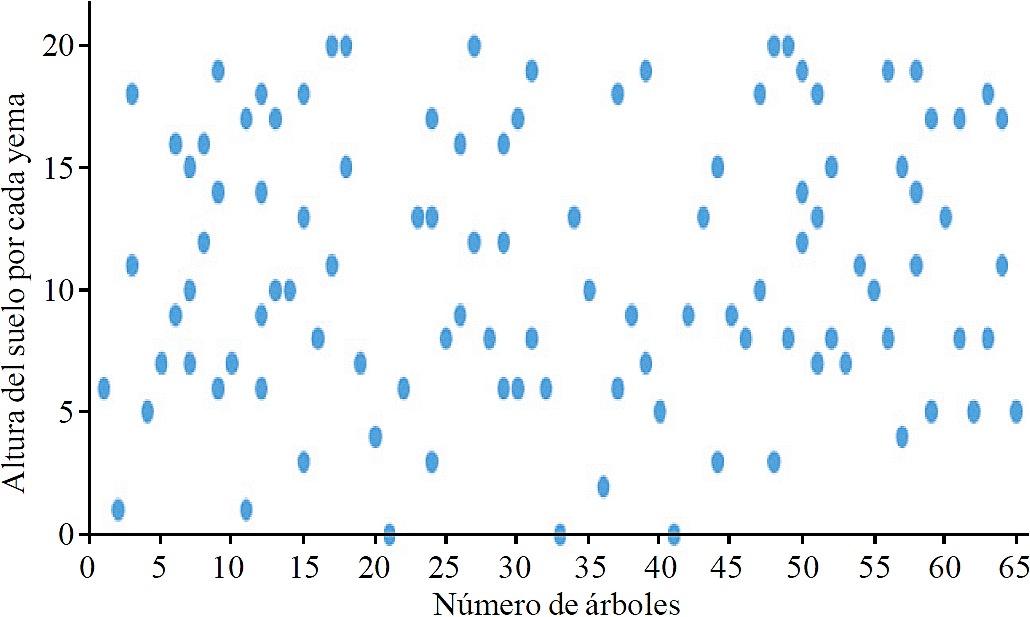
Figure 7 Number of terminal buds located on the trunks of cacao trees in the first 20 cm above ground, treatment 1.
In the second treatment (80% shade) terminal buds were located closer to 20 cm from the trunk. Pruning, which was not so severe, resulted in the production of low terminal buds low on the trunk. Excessive shade in the cocoa tree did not allow the exposure of terminal buds near the ground (Figure 8).
Statistic analysis
The results showed statistically significant differences for the treatment variable (p< 0.0001) on cocoa yield.
The site with higher pruning showed a better response in terminal buds emergence and yield, while in site B (less pruning) produced less terminal buds and low yield (Table 1).
Table 1 Means comparison.

ab Medias con diferente letra presentan diferencias estadísticas (Tukey 0.05).
When a plantation is very high, old or in abandoned conditions, pruning is done, removal and intertwined of lower branches, that the level of tree shade is regulated, which will allow more light, greater airflow and will increase the production of higher terminal buds giving as result increased production of fruits per tree (Valdés, 1988).
These results are similar to those achieved by Pike (1933) in Trinidad and Tobago with two trees three years old, which were treated: a) entirely pruned, cutting its main branches at fork height; b) lightly pruned, cutting only a part of its branches. The results were that the heavily pruned tree, terminal buds were closer to the cut. In the lightly pruned tree the greater percentage of terminal buds emerged in fan branches. Added to this, the largest fruit production was with complete pruning.
According to Piasentin and Klare-Repnik (2004) is possible to produce cocoa without shade, and productivity is higher in full sun, but there is a disadvantage that it is necessary to have irrigation, fertilization and permanent control of pests and diseases, which increases the production cost. As consequence of this management, plant longevity is significantly reduced due to the excessive continuous physiological activity.
Conclusion
After pruning the crown of cocoa tree, an increased productivity in treatment 1 was recorded, where there was higher incidence sunlight. Then, to increase productivity it is necessary pruning, and by this will induce a larger number of terminal buds resulting in new mother trees and healthy fruit.
Pruning generates more profit since plants intercept more light, and favors the emergence of buds closer to the ground and has increased production contrary to cocoa plantations with less light.
Therefore, pruning cacao agroecosystem is feasible to solve the problem of low productivity in old cocoa plantations.
Literatura citada
Almeida, A. A. and Valle, R. 2007. Ecophysiology of the cocoa tree. Brazilian Journal of Plant Physiology. 19(4): 425-448. [ Links ]
Altieri, M. A. and Nicholls, C. I. 2000. Agroecología: Teoría y Práctica para una Agricultura Sustentable. Serie Textos Básicos para la Formación Ambiental. (4):1-275 [ Links ]
Amores, F. 2013. La moniliasis del cacao. INIAP. Revista Informativa 8. 5-16 pp. [ Links ]
Ampofo, S. T. 1986. Spacing/cultivar/proning experiment, D1 Afosu, Report for the period 1982-/83 - 1984/85. Cocoa Research Institute,Tafo (Ghana). Tafo (Ghana). 26-29 pp. [ Links ]
Arias, S. J.; Olórtegui, M. J. y Salas, G. V. B. 2007. Lecciones aprendidas sobre políticas de reconversión y modernización de la agricultura en América Latina. IICA. Lima, Perú. 93 p. [ Links ]
Bautista, S., Gimeno, T., Mayor, A. G. y Gallego, D. 2004. El tratamiento de la madera quemada tras los incendios forestales. En Vallejo, V. R., Alloza, J. A. (eds.) Avances en el estudio de la gestión del monte Mediterráneo. 547-570 p- Fundación CEAM, Valencia, España. [ Links ]
Bedker, J. P.; O’Brien, G. J. y Mielke, E. M. 2004. Cómo podar árboles. United States Department of Agriculture. Preparado por Foreste Service. Northeastern Area State & Private Forestry. NA-FR-02-04. Estado Unidos de América. 5 p. [ Links ]
Cabanilla, H. 1978. Cacao: Rehabilitación, renovación, diversificación o siembra nueva. Instituto Interamericano de Ciencias Agricolas de la OEA. Turrialba, Costa Rica. 158-163 pp. [ Links ]
Clay, J. 2004. World agriculture and the environment. Island Press, 1718 Connecticut Avenue, NW, Suite 300, Washington, DC. 570 pp. ISBN 1-55963-367-0. [ Links ]
CONAFOR (Comisión Nacional Forestal). 2001. Programa estratégico forestal para México 2025. México: Comisión Nacional Forestal. 191 p. [ Links ]
Corben, J. and Kather, M. Comp. 1987. Cocoa guidebook and training course. Cocoa Research Institute,Talo, Ghana.Tafo. 37-38 pp. [ Links ]
Córdova, A. V. 2005. Organización campesina en la reconversión del cacao tradicional a orgánico en Tabasco, México. En: Aragón G. A., López, O. J. F. y Tapia, R. A. M. (eds) Manejo Agroecológico de Sistemas. Dirección de Fomento Editorial, Benemérita Universidad Autónoma de Puebla. Puebla. 180 p. [ Links ]
Corven, J. 1991. Asociación de cultivos con cacao: aspectos económicos. In seminario Regional “Sombras y cultivos asociados con cacao”. Turrialba, Costa Rica. Memoria, Turrialba, Costa Rica. Eds. W. Phillipa Mora. Serie Técnica. Informe Técnico/ CATIE no. 226. 221 p. [ Links ]
Cuatrecasas, J. 1964. Cacao and its allies: A taxonomic revision of the genus Theobroma. Contr. U.S. Natl. Herb. 35(6):379-614. [ Links ]
Donald, P. F. 2004. Biodiversity impacts of some agricultural commodity production systems. Conserv Biol. 18:17-37 [ Links ]
Dubois, A. 2007. Producción agrícola y conservación de la biodiversidad: ¿dos actividades compatibles? El caso de los sistemas agroforestales con cacao en Talamanca - Costa Rica. Tesis MSc. Universidad de Lyon, Francia. 71 p. [ Links ]
Enete, A.A. and Amusa T.A. 2010. Contribution of Men and Women to Farming Decisions in Cocoa Based Agroforestry Households of Ekiti State, Nigeria. Tropicultura, vol. 28, 77-83 pp. [ Links ]
Enríquez, G. A. 1987. Poda del cacao. Manual del cacao para agricultores. UNED, San José, Costa Rica. 43-48 pp. [ Links ]
Enríquez, G. A. 2004. Cacao orgánico: Guía para productores ecuatorianos. Instituto Nacional Autónomo de Investigaciones Agropecuarias (INIAP). Manual No 54. Quito, Ecuador. 360 p. [ Links ]
FAO. 2004. Inventario forestal nacional. Manual de campo modelo. Programa de evaluación de los recursos forestales (ERF). Guatemala. 89 p. [ Links ]
FAOSTAT. 2014. Organización de las Naciones Unidas para la Alimentación y la Agricultura. Consultado: Consultado: http://faostat.fao.org/site/342/default.aspx 11/06/2014. [ Links ]
Foro Nacional Cacaotero. 2003. Programa estratégico de investigación y transferencia de tecnología para la cadena agroindustrial cacao en México. Foro Nacional Cacaotero realizado en Villahermosa Tabasco, mayo 2003. 104 p. [ Links ]
Franzen, M. and Borgerhoff, M. M. 2007. Ecological, economic and social perspectives on cocoa production worldwide, In: Biodiversity Conservation. 16:3835-3849. [ Links ]
Fundación Maquita Cushunchic. 2010. Podas en el cacao. Barrio Turumbaba, Quito, Ecuador. 2 p. [ Links ]
García, E. 1973. Modificaciones al sistema de clasificación climática de Köeppen. Número 6. Instituto de Geografía, UNAM, México. 94 p. [ Links ]
Gómez, M. A. y Azócar, A. Áreas potenciales para el desarrollo del cultivo en el cacao Estado Mérida, Venezuela Agronomía Tropical. 52(2). [ Links ]
Gurr, G. M.; Wratten, S. D. and Luna, J. 2003. Multi-function agricultural biodiversity: pest management and other benefits. Basic and Applied Ecology. 4:107-116. [ Links ]
INEGI. 2012. Prontuario de información geográfica municipal de los Estado Unidos Mexicanos. Cárdenas, Tabasco. Clave geoestadística 27002. Consultado: http://www3.inegi.org. mx/sistemas/mexicocifras/datos-geograficos/27/27002.pdf 05/06/2014. [ Links ]
Lobão, D. E.; Setenta, W. C.; Lobão, E. S. P.; Curvelo, K. and Valle, R. R. 2007. Cacau cabruca: sistema agrossilvicultural tropical. In: Valle, R. R. (ed), Ciência, Tecnologia e Manejo do Cacaueiro, pp.290-323, Gráfica e Editora Vital Ltda, Ilhéus. [ Links ]
Mejía, L. 2006. Tecnología para el mejoramiento del sistema de producción de cacao. Aspectos ecofisiologicos relacionados con el cultivo del cacao. Corpoica disponible en http://www.ceaecuador.org/images. [ Links ]
Motamayor, J. C.; Risterucci, A. M.; Lopez, P. A. and Lanaud, C. 2002. Cacao domestication I: the origin of the cacao cultivated by the Mayas. Heredity. 89:380-386 [ Links ]
OIEDRUS-Tabasco. 2012. Producción del cacao en el estado de Tabasco. Consultado: Consultado: http://www.campotabasco.gob.mx/ 29/10/2012. [ Links ]
Palencia, C. G. y Mejía, F. L. 2000. La Poda del árbol de Cacao. En Tecnología para el Mejoramiento del Sistema de Producción de cacao. Bucaramanga. Corpoica. 92-94 pp. [ Links ]
Pastorelly, D.; Vera, M.; Pilamunga, M.; Izquierdo, L.; Mejía, Y.; Posligua W.; Zambrano, D. y Rodríguez, R. 2006. Manual del cultivo del cacao. Asociación Nacional de Exportadores de Cacao (ANECACAO). Guayaquil. Ecuador. 80 p. [ Links ]
Piasentin, F. y Klare-Repnik, L. 2004. Biodiversity conservation and cocoa agroforest. Bioversity International. 5: 7-8. [ Links ]
Pike, E. E. 1933. The physiology of cacao. I. General observations of growth, flowering and fruiting. The Imperial Collega of Tropical Agriculture, Trinidad. Annual report on cacao research 1932, 2:37-40. [ Links ]
Quiroz, J. y Amores, F. 2002. Rehabilitación de plantaciones tradicionales de cacao en Ecuador. Manejo integrado de plagas No 63, Costa Rica, 63-80 pp. [ Links ]
Quiroz ,V. J. y Mestanza, V. S. 2010. Programa Nacional de Cacao. La poda de cacao. Ministerio de Agricultura, Ganadería, Acuacultura y Pesca. Boletín técnico No. 378. Ecuador. 2 p. [ Links ]
Ramírez, D. F. 1997. Sistema agroindustrial del cacao en México y su comportamiento en el mercado. Universidad Autónoma Chapingo. México. 161 p. [ Links ]
Rivas, T. D. 2006. Evaluación de los recursos forestales. Universidad Autónoma Chapingo, Texcoco, Estado de México. 26 p. [ Links ]
SAGARPA 2013. Retos y oportunidades del sistema agroalimentario de México en los próximos 20 años. D. F. México 283 p. [ Links ]
Sala, O. E.; Chapin, I. F. S.; Armesto, J. J.; Berlow, E.; Bloomfield, J.; Dirzo, R.; Huber Sanwald, E.; Huenneke, L. F.; Jackson, R. B.; Kinzig, A.; Leemans, R.; Lodge, D. H.; Mooney, H. A.; Oesterheld, M.; Leroy-Poff, N., Sykes, M. T.; Walker, B. H.; Walker, M. and Wall, D. H. 2000. Global biodiversity scenarios for the year 2100. Science 287 (5459), 1770-1774. [ Links ]
Sánchez, E. L.; Parra, D. y Rondón, O. 2007. Poda del árbol de cacao. Ciencia y producción vegetal. Centro de Investigaciones Agrícolas del Estado de Táchira. La Asunción, Venezuela. 67 p. [ Links ]
SAS/STAT® (Programa de Computadora). Versión 9.3. SAS Institute Inc; 2013. [ Links ]
Schultz, T. W. 1964. Transformando la Agricultura Tradicional. New Haven: The American Economic Review. 51:1-17. [ Links ]
SIAP. 2014. Datos de superficie plantada de cacao. http://www.siap.gob.mx/ . Consultado: 07/03/2014. [ Links ]
Sodhi, N. S.; Liow, L. H. and Bazzaz, F.A. 2004. Avian extinctions from tropical and subtropical forests. Annual Review of Ecology and Systematics, 35:323-345. [ Links ]
Sperber, C. F., Kazuiyuki, N.; Valverde, M. J.; and de Siqueira, F. N. 2004. Tree species richness and density affect parasitoid diversity in cacao agroforestry. Basic and Applied Ecology. 5:241-251. [ Links ]
Steel, G. D. R.; Torrie, H. J. y Dickey, D. A. 1997. Principles and procedures of statistics a biometrical approach. 3ra Ed. Michigan, USA: McGraw Hill Companies, Inc. [ Links ]
Tilman, D.; Peter, B. R.; Knops, J.; Wedin, D.; Mielke, T. and Lehman, C. 2001. Diversity and Productivity in a Long-Term Grassland Experiment. Science 294-843. [ Links ]
Tscharntke, T.; Clough, Y.; Bhagwat, S. A.; Buchori, D.; Faust, H.; Hertel, D.; Hölscher, D.; Juhrbandt, J.; Kessler, M.; Perfecto, I.; Scherber, C.; Schroth, G.; Veldkamp, E. and Wanger, T. C. 2011. Multifunctional shade-tree management in tropical agroforestry landscapes - a review. J. Appl. Ecol., 48:619-629. [ Links ]
Valdés, H. 1998. El Cultivo del Cacao. Turrialba, Costa Rica, CATIE, Departamento de Producción Vegetal. 162 p. [ Links ]
Vera, J. y Moreira, M. 1993. Poda In: Suárez C. (Ed.). Manual del cacao. Segunda edición Quito-Ecuador, INIAP.P.6569. Manual Nº 25. [ Links ]
Vérbeke, L. P. C.; Van Coillie, F. M. B. and De Wulf, R. R. 2006. Object based forest stand density estimation from very high resolution optical imagery using wavelet-based texture measures. In: First International Conference on Object based Image Analysis (OBIA 2006). Salzburg University, Austria. [ Links ]
Zarco, E. V. M.; Valdez, H. J. L.; Ángeles, P. L. y Castillo, A. O. 2010. Estructura y diversidad de la vegetación arbórea del parque estatal Agua Blanca, Macuspana, Tabasco. Universidad y Ciencia, 26 (1): 1-17. [ Links ]
Received: November 2015; Accepted: January 2016











 texto em
texto em 


